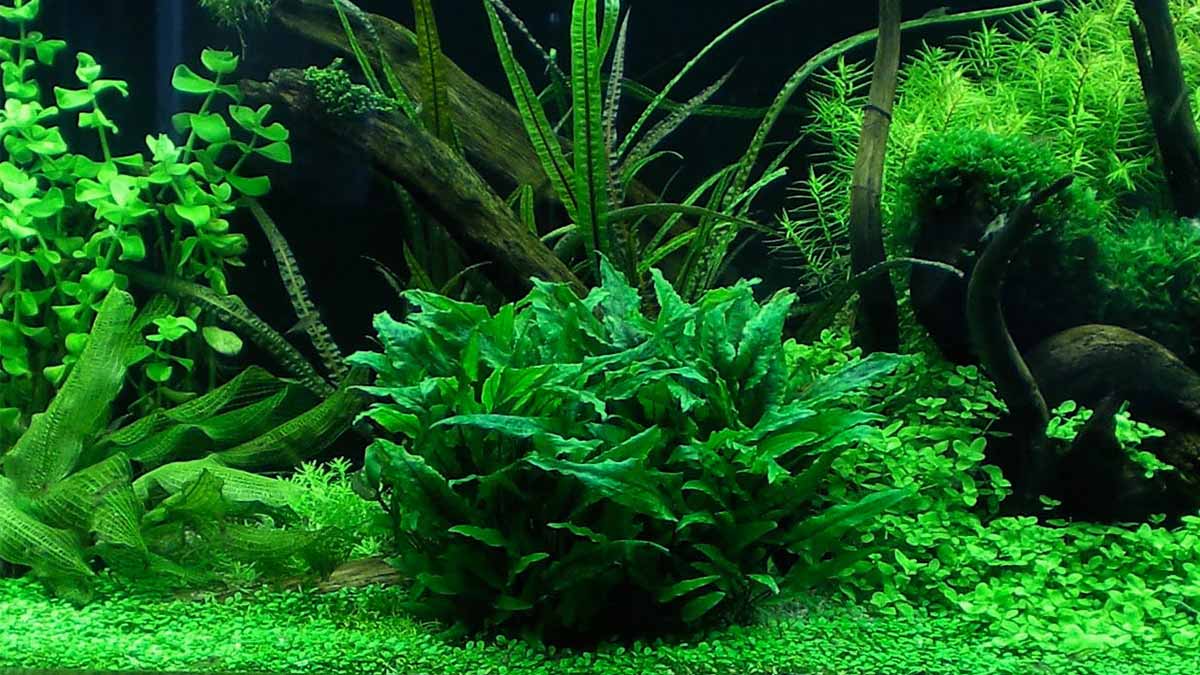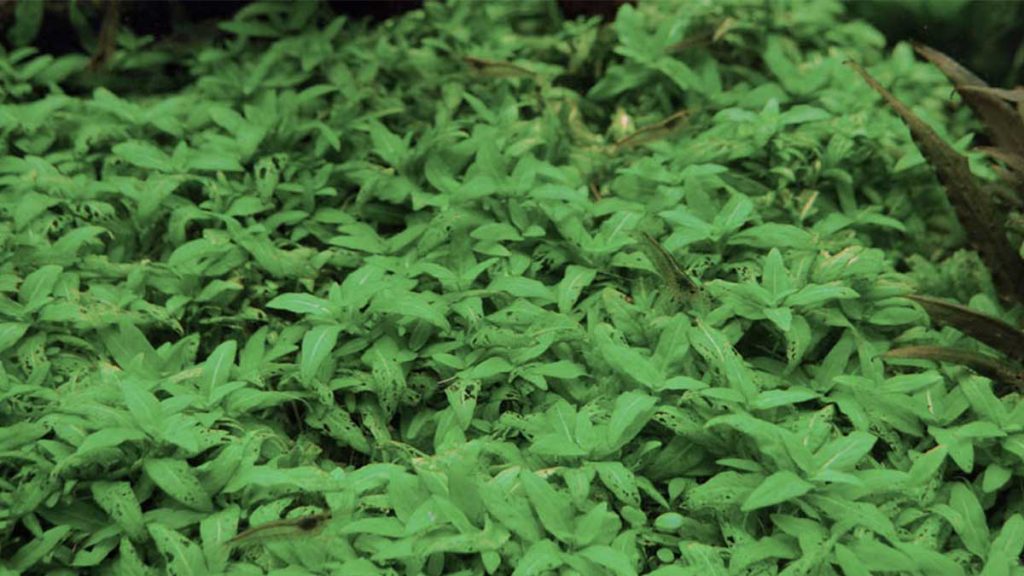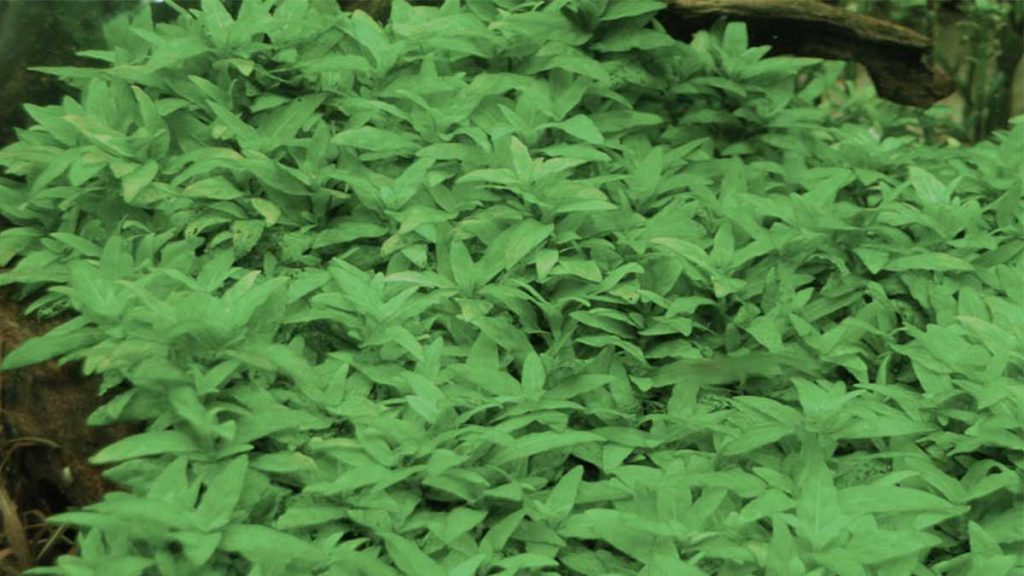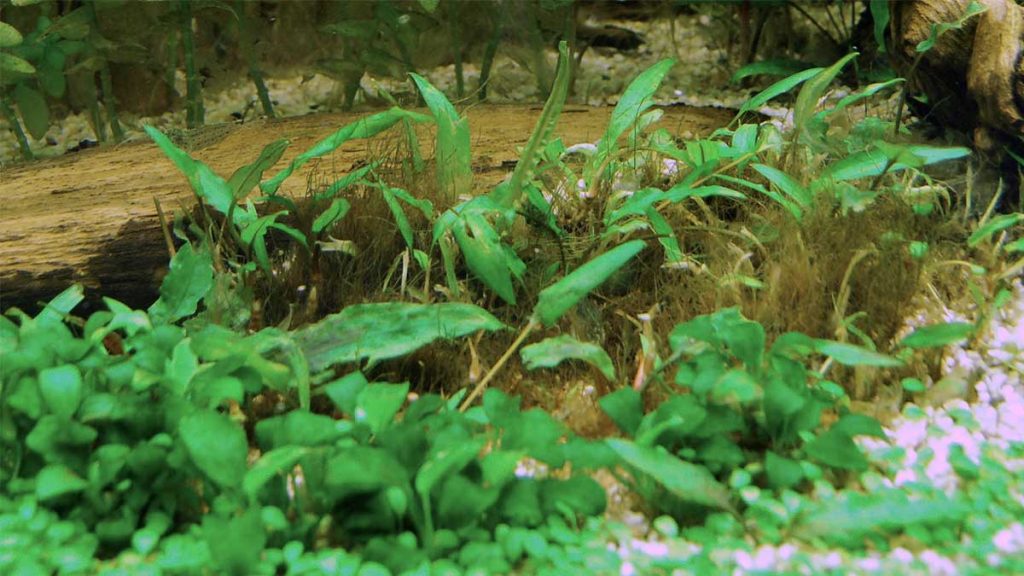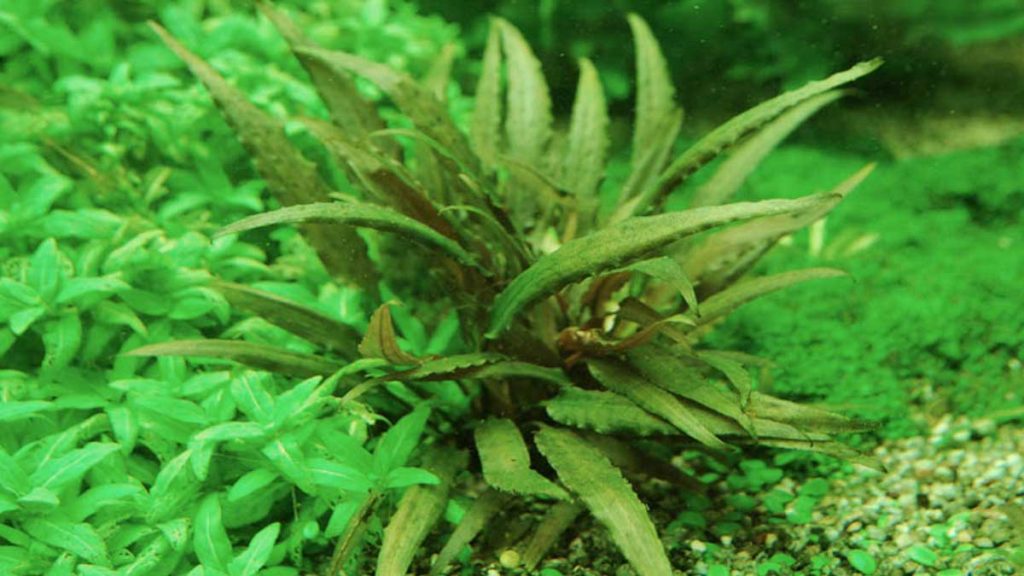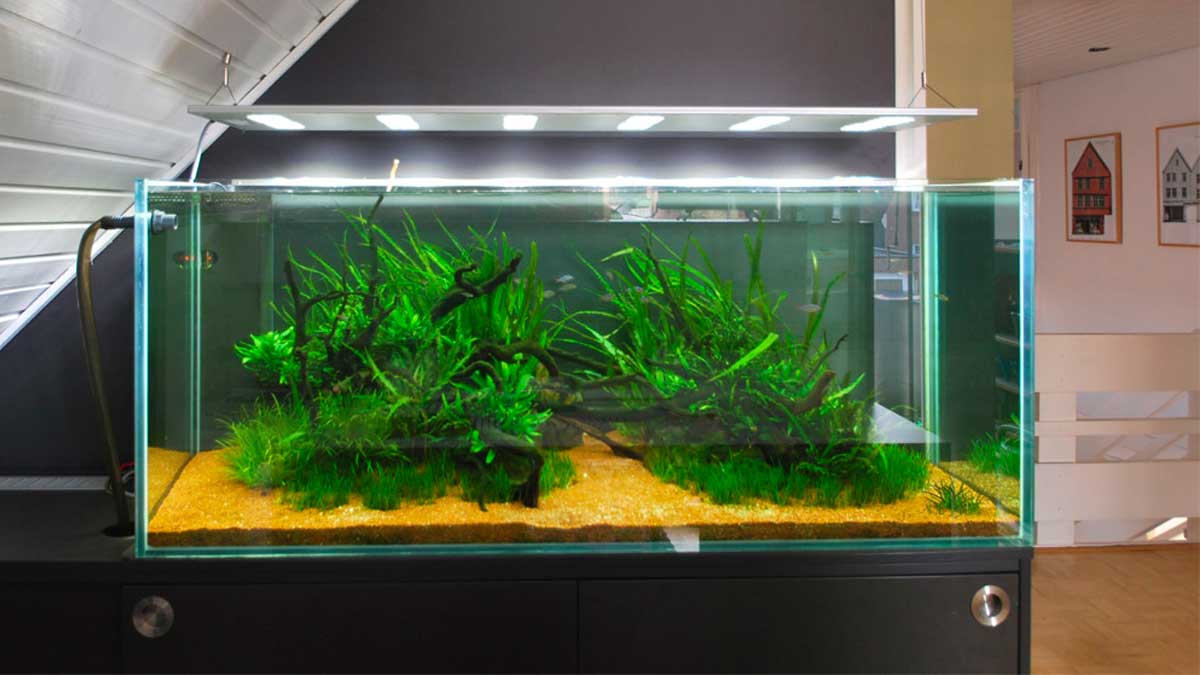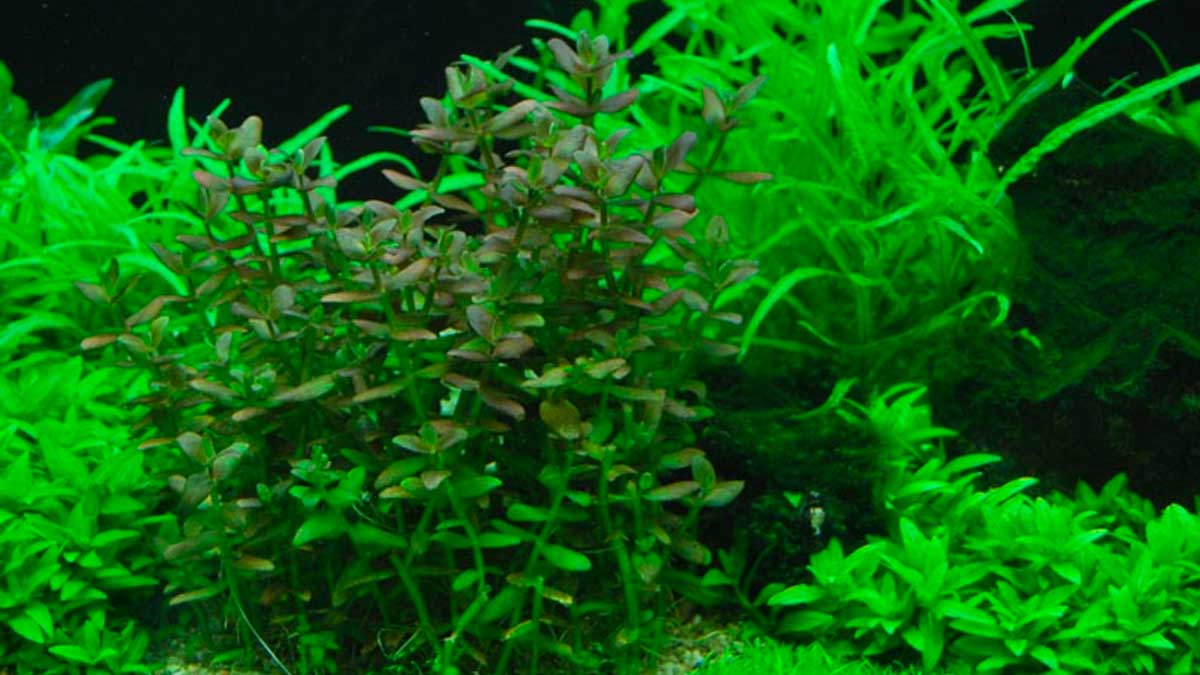Crypts are generally considered easy. A beginner’s plant. Especially Sri Lankan species such as C. wendtii, C. walkeri, C. beckettii and C. undulata will still grow under the most adverse conditions. I never actually took any photos of tanks in dreary anterooms of offices or across at the local burger joint…
At one time I had almost given up on Crypts. I thought that ‘beginner’s plant’ was to be taken literally and that, in the hands of a seasond aquarist, these plants would not thrive. At that time, every time I planted Crypts in my aquarium, new leaves would emerge only to rot away immediately so that a captivating layout would never develop.Evetually, I found out that I had meant to well: At a General Hardness of 14-21°dH in Münster, I had simply supplied too much CO2 to get the pH down below 7. Considering that 35 mg/l CO2 is the upper limit, my aquarium water was around 90 mg/l. This is what caused the leaves to melt for the species mentioned above. Interestingly, C. crispatula var. balansae, which I kept in the same tank, was not affected at all.
This reaction to environmental change is known as “Cryptocoryne Desease” as it used to be believed that this was, in fact a disease. Maybe the term “Cryptocoryne wilt” is more apt, though.
I have since started to use rainwater and pH is kept at around 6.95. My cryptocoryne wendtii is thriving and a nice, dense tuft has formed.
Sadly, this lovely group has been completely consumed by CD, if for completely different reasons. I am currently experimenting with a new fertilizer containing high doses of macro nutrients. Phosphate is generally considered to be ideal below 25mg/l. While I was trying out different dosage I had inadvertently raised the phosphate level to ten times the recommended maximum. Some plants responded by developing holes in all but the youngest leaves. Staurogyne and Hygrophila were affected the most. I assume that the high phosphate levels acted as an inhibitor to iron uptake and hence caused these deficiency symptoms.
I reduced phosphate levels gently by changing about 1/3rd of the water every week, over a period of six weeks. The Staurogyne responded well and has almost completely recovered.
Unfortunately, the entire population of C.wendtii has collapsed. The interesting thing to notice is that the leaf wilt began only after I had startet to reduce phosphate levels. I don’t think there is a satisfying scientific explanation yet for this.
Even the Cryptocoryne crispatula var balansae is now affected and is developng clear signs of leaf wilt. On the other hand, a C. beckettii which is growing in the same aquarium is not affected at all. This may be due to it being less prone to leaf wilt but there could be other reasons just as well.
Other aquarists have told me that a change in lighting can trigger Cryptocoryne Wilt. Hence, lights should never be exchanged at the same time but one by one over a period of six months.Water changes have also been reported to start the melting.
I have not experienced this myself, actually but perhaps if the water is changed after a long time and a lot of fish are kept, phosphate levels may have built up enough to cause the wilt after the fresh water is added and levels are reduced.
One fact remains – it is always safer to try and keep everything as stable as possible if you want to grow Crypts successfully and over a long period of time.
